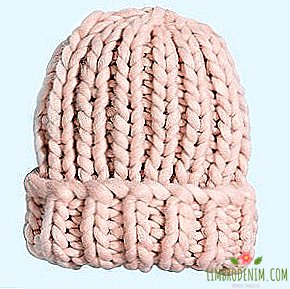Is red wine good for health?
We often hear that red wine is healthy. for heart, blood vessels, maintaining stable pressure and wellness. It is believed that this drink has an antioxidant effect, in moderate amounts it stabilizes the level of "good" cholesterol and protects the arteries from damage, thereby reducing the risk of heart disease. No matter how encouraging the stories about the beneficial properties of red wine in comparison with other alcohol, doctors do not encourage the use of alcohol: slightly exceeding the allowable rate, all the benefits are easy to turn to harm. Nevertheless, a glass of wine at dinner is considered acceptable. We decided to figure out what it can give, besides a pleasant taste and high spirits, and whether red has advantages over other wines.

Let's say right away: to give a definite answer about the benefits of wine is difficult. Science does not yet have enough convincing data that would prove a causal relationship between moderate consumption of this drink and improved health. Opinion about the advantages of wine over other alcohol, as well as the greater benefits of red compared with white, is based on the following. The wine contains polyphenols, possibly with an antioxidant effect and beneficial effects on the state of the heart vessels. Particular attention is paid to resveratrol contained in the skin of grapes. Since red fermentation requires longer fermentation, resveratrol (especially in pinot noir, shiraz and burgundi varieties) actually contains more resveratrol than white wine.
According to some studies, resveratrol can prevent vascular damage, reduce "bad" cholesterol (low density lipoprotein), reduce blood clots and have an anti-inflammatory effect, maintain a healthy heart rate, and even beneficially affect bone strength. About ten years ago, it was spread that this substance even helps to slightly reduce the risk of certain types of cancer, but these data have already been questioned. Most studies of the effect of wine and its antioxidant content were carried out on animals, and no large-scale clinical trials were conducted to confirm the results for humans. Experiments in mice have shown that resveratrol may reduce the risk of obesity and diabetes (two serious risk factors for heart disease), and according to research in pigs, resveratrol may increase the body's ability to absorb insulin.
It is not known whether the same effects are achieved in humans, but in any case, in order to get the appropriate dose of resveratrol in wine equivalent, a person needs to drink more than 1,000 liters of red dry daily. In the form of dietary supplements, this substance is not always well absorbed by the human body - however, doctors do not see any harm in their use as a preventive measure. But a recent study by Danish scientists has shown that resveratrol may reduce the heart's benefit from exercise in men aged.
White wine lovers claim that it has no less useful properties. They allegedly lie in another polyphenol - caffeic acid, which is contained in both white and red wine in approximately equal amounts (in fairness, we note that caffeic acid is in all plants). According to studies of Italian biologists and physicians in mice and human blood vessel cells grown in the laboratory, caffeic acid in very low doses actually stimulates the production of nitric oxide, and it lowers blood pressure, protects the myocardium from ischemia, reduces the risk of diabetes and chronic kidney disease. So, perhaps, from a glass of wine there is a very real benefit - in this case it does not matter what color it is.

Most doctors agree that a healthy rate is no more than one glass of wine a day for women.
It is important to know that the effect of antioxidants in wine lasts a short time after consumption, and regular libations can turn into dependence: if instead of one glass at dinner three are emptied, there is reason to think. Most doctors agree that a healthy rate is no more than one glass (150 grams) per day for women of any age and men over 65, and for other men the rate reaches two glasses. This difference is due to the fact that the average man weighs more and has a large amount of the enzyme that breaks down alcohol. In order not to harm yourself, it is important to know not only your rate, but also the technique of wine production that you choose: to avoid drinks from "dry wine" and wines of dubious production (you can read about how to choose wine here).
Many people get headaches from red wine. In individual cases, this may be due to pressure in the vessels, but some researchers believe that headache causes sulfur dioxide. He can get into the drink in different ways: when winemakers treat them to the vineyards and equipment of the winery to fight fungi, as well as naturally through the roots of the vine from the soil or in the fermentation process from yeast. In the latter case, the natural concentration of sulfur oxide is not enough to stabilize the wine, so manufacturers add a preservative. In some countries, for example in the United States, the content of sulfur dioxide must necessarily be indicated on the packaging, but if there is no information, it does not mean that there is no substance in the drink.
A peculiar way out of the situation recently proposed South African wine companies. According to their new technique in the manufacture of red wine (in particular, merlot), traditional preservatives such as sulfur dioxide, which are associated not only with the usual headache, but also with allergies and migraines, are replaced by extracts of rooibosh and hanibusha: they retain the aroma of the wine well and by themselves rich in antioxidants. However, while it is difficult to say how much benefit in this, and how much marketing.
Choosing the lesser of the evils, you should pay attention to the nutritional value of wine: we do not recommend carefully counting calories, but those who follow the physical form, do not interfere with being aware of their approximate daily intake. According to the British resource DrinkAware, a glass of red wine may contain as many calories as a portion of ice cream, but their number is largely determined by the strength (in a gram of alcohol, seven calories). The nutritional value of a glass of pink dry can reach 200 calories, but the champagne is lighter (in a glass of white brut, usually about 90 calories). Dessert wines in the 250-275 calories should be avoided: from the chocolate cake, there may be less harm than from sweet alcohol. Alcohol - not a medicine, therefore, deciding to drink, you should not look for excuses for its health benefits.
Photo: Africa Studio - stock.adobe.com, gorbovoi81 - stock.adobe.com




